Bionic Underwater Acoustic Communication by Mimicking Dolphin Whistle Based on Frequency Shift Keying
-
摘要: 针对水下隐蔽声通信的需求,该文提出一种基于频移键控的仿海豚哨声水声通信方法,通过模拟海豚哨声以降低通信信号被发现的概率,从而实现水下隐蔽声通信。该方法将信息调制生成的基带信号以一定比例与海豚哨声信号时频谱轮廓曲线相加获得合成哨声时频谱,再生成合成哨声作为仿生通信信号。接收端提取接收到的合成哨声与本地生成的存在固定频差的海豚哨声相干相乘,经过低通滤波获得频移键控信号进行信息解调,实现仿生通信。通过时频相关系数和Mel倒谱距离分析了通信信号仿生效果。仿真与海试试验验证了该方法的可行性,当码元宽度为0.1s时可在2km距离上实现有效通信,且时频相关系数不低于0.99。该方法调制解调原理简单,系统资源消耗更少,更易于工程实现,为仿生水声通信算法的实际应用提供技术支撑。Abstract: To meet the demand of covert Underwater Acoustic Communication (UAC), a bionic UAC method by mimicking dolphin whistle based on Frequency Shift Keying (FSK) is proposed. The information modulated baseband signal is added to the selected spectrum contour of the dolphin whistle with a certain weight to obtain the synthetic contour. Then generate the synthetic whistle to transmit the information. The receiver extracts the received synthetic whistle, and coherently multiples it with the local whistle, whose contour has a fix frequency difference from the selected whistle contour. A low-pass filtering is adopted to obtain the FSK signal, which is used for demodulation. The bionic effect is analyzed through Time-Frequency Correlation Coefficient (TFCC) and Mel frequency cepstrum Distance (MelD). Simulation and sea trial verified its feasibility. A reliable communication can be achieved at 2km when the symbol width is 0.1s and the TFCC is over 0.99. The low complexity makes the proposed bionic UAC method more suitable for implement, which provides technical support for the practical application of bionic UAC.
-
表 1 仿真实验参数
参数名称 参数值 码元宽度$T$(s) 0.1和0.05 调制频差$\Delta f$(Hz) 10,20,50,100,200 FSK载波频率${f_c}$(Hz) 300 采样率(Hz) 48000 仿真信道多径数目 15 表 2 仿哨声FSK通信信号相似度
合成哨声参数 TFCC $\bar r$ MelD ${\bar d_{{\rm{MFCC}}} }$ $T = 0.1\;{\text{s }},\;\Delta f = 10\;{\text{Hz}}$ 0.99999 0.27905 $T = 0.1\;{\text{s }},\;\Delta f = 20\;{\text{Hz}}$ 0.99995 0.53024 $T = 0.1\;{\text{s }},\;\Delta f = 50\;{\text{Hz}}$ 0.99968 1.0147 $T = 0.1\;{\text{s }},\;\Delta f = 100\;{\text{Hz}}$ 0.99874 1.7113 $T = 0.1\;{\text{s }},\;\Delta f = 200\;{\text{Hz}}$ 0.99497 2.4862 $T = 0.05\;{\text{s }},\;\Delta f = 10\;{\text{Hz}}$ 0.99999 0.28107 $T = 0.05\;{\text{s }},\;\Delta f = 20\;{\text{Hz}}$ 0.99995 0.50654 $T = 0.05\;{\text{s }},\;\Delta f = 50\;{\text{Hz}}$ 0.99966 1.1916 $T = 0.05\;{\text{s }},\;\Delta f = 100\;{\text{Hz}}$ 0.99863 2.0187 $T = 0.05\;{\text{s }},\;\Delta f = 200\;{\text{Hz}}$ 0.99456 3.1247 表 3 基于仿哨声FH通信信号相似度
仿哨声FH通信[17] 分段LFM仿哨声通信[15] 基于数字水印的仿哨声通信[18] 调制参数 TFCC均
值$\bar r$MelD均
值${\bar d_{{\rm{MFCC}}} }$调制参数 TFCC均
值$\bar r$MelD均
值${\bar d_{{\rm{MFCC}}} }$调制参
数${L_{{\rm{seq}}} } = 511$WCC均
值$\bar r$MelD均
值${\bar d_{{\rm{MFCC}}} }$$T = 0.1\;{\text{s}}$
$k = 100$0.99899 2.8374 $T = 0.1\;{\text{s}}$
$k = 20\;{\text{kHz/s}}$0.86605 8.9911 $T = 0.6\;{\text{s}}$
$\delta = 1$0.99458 0.78852 $T = 0.1\;{\text{s}}$
$k = 200$0.99597 2.6838 $T = 0.1\;{\text{s}}$
$k = 40\;{\text{kHz/s}}$0.65038 15.657 $T = 0.6\;{\text{s}}$
$\delta = 2$0.97918 1.5131 $T = 0.1\;{\text{s}}$
$k = 400$0.98416 3.2159 $T = 0.1\;{\text{s}}$
$k = 60\;{\text{kHz/s}}$0.48296 18.765 $T = 0.6\;{\text{s}}$
$\delta = 3$0.95627 1.8498 $T = 0.05\;{\text{s}}$
$k = 100$0.99899 2.6924 $T = 0.05\;{\text{s}}$
$k = 20\;{\text{kHz/s}}$0.96309 5.7217 $T = 0.6\;{\text{s}}$
$\delta = 4$0.92829 2.2913 $T = 0.05\;{\text{s}}$
$k = 200$0.99599 2.9955 $T = 0.05\;{\text{s}}$
$k = 40\;{\text{kHz/s}}$0.87503 8.6043 $T = 0.6\;{\text{s}}$
$\delta = 5$0.89837 2.5308 $T = 0.05\;{\text{s}}$
$k = 400$0.98425 3.6329 $T = 0.05\;{\text{s}}$
$k = 60\;{\text{kHz/s}}$0.76578 11.049 $T = 0.6\;{\text{s}}$
$\delta = 6$0.86894 2.7745 表 4 海试验证试验处理结果
合成哨声参数 总发射比特数 错误的比特数 $T = 0.1\;{\text{s}},\;\Delta f = 10\;{\text{Hz}}$ 78 2 $T = 0.1\;{\text{s}},\;\Delta f = 20\;{\text{Hz}}$ 78 4 $T = 0.1\;{\text{s}},\;\Delta f = 50\;{\text{Hz}}$ 78 0 $T = 0.1\;{\text{s}},\;\Delta f = 100\;{\text{Hz}}$ 78 0 $T = 0.1\;{\text{s}},\;\Delta f = 200\;{\text{Hz}}$ 78 0 $T = 0.05\;{\text{s}},\;\Delta f = 20\;{\text{Hz}}$ 156 6 $T = 0.05\;{\text{s}},\;\Delta f = 50\;{\text{Hz}}$ 156 0 $T = 0.05\;{\text{s}},\;\Delta f = 100\;{\text{Hz}}$ 156 8 $T = 0.05\;{\text{s}},\;\Delta f = 200\;{\text{Hz}}$ 156 1 -
[1] QARABAQI P and STOJANOVIC M. Statistical characterization and computationally efficient modeling of a class of underwater acoustic communication channels[J]. IEEE Journal of Oceanic Engineering, 2013, 38(4): 701–717. doi: 10.1109/JOE.2013.2278787 [2] HEIDEMANN J, STOJANOVIC M, and ZORZI M. Underwater sensor networks: Applications, advances and challenges[J]. Philosophical Transactions of the Royal Society A:Mathematical, Physical and Engineering Sciences, 2012, 370(1958): 158–175. doi: 10.1098/rsta.2011.0214 [3] JIANG Shengming. On securing underwater acoustic networks: A survey[J]. IEEE Communications Surveys & Tutorials, 2019, 21(1): 729–752. doi: 10.1109/COMST.2018.2864127 [4] YANG T C and YANG Wenbin. Low probability of detection underwater acoustic communications using direct-sequence spread spectrum[J]. The Journal of the Acoustical Society of America, 2008, 124(6): 3632–3647. doi: 10.1121/1.2996329 [5] QU Fengzhong, YANG Liuqing, and YANG T C. High reliability direct-sequence spread spectrum for underwater acoustic communications[C]. Proceedings of the OCEANS 2009, Biloxi, USA, 2009: 1–6. [6] DIAMANT R and LAMPE L. Low probability of detection for underwater acoustic communication: A review[J]. IEEE Access, 2018, 6: 19099–19112. doi: 10.1109/ACCESS.2018.2818110 [7] LIU Songzuo, QIAO Gang, and ISMAIL A. Covert underwater acoustic communication using dolphin sounds[J]. The Journal of the Acoustical Society of America, 2013, 133(4): EL300–EL306. doi: 10.1121/1.4795219 [8] QIAO Gang, BILAL M, LIU Songzuo, et al. Biologically Inspired covert underwater acoustic communication—A review[J]. Physical Communication, 2018, 30: 107–114. doi: 10.1016/j.phycom.2018.07.007 [9] 马天龙. 仿鲸目动物哨声水声通信技术研究[D]. [硕士论文], 哈尔滨工程大学, 2017.MA Tianlong. Bionic underwater acoustic communication by mimicking cetaceans whistles[D]. [Master dissertation], Harbin Engineering University, 2017. [10] HAN Xiao, YIN Jingwei, DU Pengyu, et al. Experimental demonstration of underwater acoustic communication using bionic signals[J]. Applied Acoustics, 2014, 78: 7–10. doi: 10.1016/j.apacoust.2013.10.009 [11] 韩笑, 殷敬伟, 郭龙祥, 等. 基于差分Pattern时延差编码和海豚whistles信号的仿生水声通信技术研究[J]. 物理学报, 2013, 62(22): 224301. doi: 10.7498/aps.62.224301HAN Xiao, YIN Jingwei, GUO Longxiang, et al. Research on bionic underwater acoustic communication technology based on differential Pattern time delay shift coding and dolphin whistles[J]. Acta Physica Sinica, 2013, 62(22): 224301. doi: 10.7498/aps.62.224301 [12] 刘凇佐, 刘冰洁, 尹艳玲, 等. M元仿海豚叫声隐蔽水声通信[J]. 哈尔滨工程大学学报, 2014, 35(1): 119–125.LIU Songzuo, LIU Bingjie, YIN Yanling, et al. M-ray covert underwater acoustic communication by mimicking dolphin sounds[J]. Journal of Harbin Engineering University, 2014, 35(1): 119–125. [13] JIANG Jiajia, WANG Xianquan, DUAN Fajie, et al. Bio-inspired steganography for secure underwater acoustic communications[J]. IEEE Communications Magazine, 2018, 56(10): 156–162. doi: 10.1109/MCOM.2018.1601228 [14] ELMOSLIMANY A, ZHOU Meng, DUMAN T M, et al. An underwater acoustic communication scheme exploiting biological sounds[J]. Wireless Communications and Mobile Computing, 2016, 16(15): 2194–2211. doi: 10.1002/wcm.2676 [15] LIU Songzuo, MA Tianlong, QIAO Gang, et al. Biologically inspired covert underwater acoustic communication by mimicking dolphin whistles[J]. Applied Acoustics, 2017, 120: 120–128. doi: 10.1016/j.apacoust.2017.01.018 [16] JIANG Jiajia, LI Chunyue, WANG Xianquan, et al. Covert underwater communication based on combined encoding of diverse time-frequency characteristics of sperm whale clicks[J]. Applied Acoustics, 2021, 171: 107660. doi: 10.1016/j.apacoust.2020.107660 [17] QIAO Gang, MA Tianlong, LIU Songzuo, et al. A frequency hopping pattern inspired bionic underwater acoustic communication[J]. Physical Communication, 2021, 46: 101288. doi: 10.1016/j.phycom.2021.101288 [18] 杨少凡, 郭中源, 贾宁, 等. 海豚Whistles为信息载体的正交频分复用循环移位键控扩频伪装水声通信[J]. 声学学报, 2018, 43(5): 753–761. doi: 10.15949/j.cnki.0371-0025.2018.05.004YANG Shaofan, GUO Zhongyuan, JIA Ning, et al. Orthogonal frequency division multiplexing cyclic shift keying spread spectrum camouflaging underwater acoustic communication with dolphin whistles as information carrier[J]. Acta Acustica, 2018, 43(5): 753–761. doi: 10.15949/j.cnki.0371-0025.2018.05.004 [19] 杨少凡, 郭中源, 肖东, 等. 伪装水声通信信号波形设计及其应用[J]. 声学学报, 2019, 44(1): 86–95. doi: 10.15949/j.cnki.0371-0025.2019.01.010YANG Shaofan, GUO Zhongyuan, XIAO Dong, et al. Waveform design of camouflage underwater acoustic communication and its application[J]. Acta Acustica, 2019, 44(1): 86–95. doi: 10.15949/j.cnki.0371-0025.2019.01.010 [20] BUCK J R and MORGENBESSER H B. Synthesis and modification of the whistles of the bottlenose dolphin, Tursiops truncatus[J]. The Journal of the Acoustical Society of America, 2000, 108(1): 407–416. doi: 10.1121/1.429474 [21] WATKINS W. Watkins marine mammal sound database[EB/OL].https://cis.whoi.edu/science/B/whalesounds/about.cfm, 2021. [22] BERGER C R, ZHOU Shengli, PREISIG J C, et al. Sparse channel estimation for multicarrier underwater acoustic communication: From subspace methods to compressed sensing[J]. IEEE Transactions on Signal Processing, 2010, 58(3): 1708–1721. doi: 10.1109/TSP.2009.2038424 -





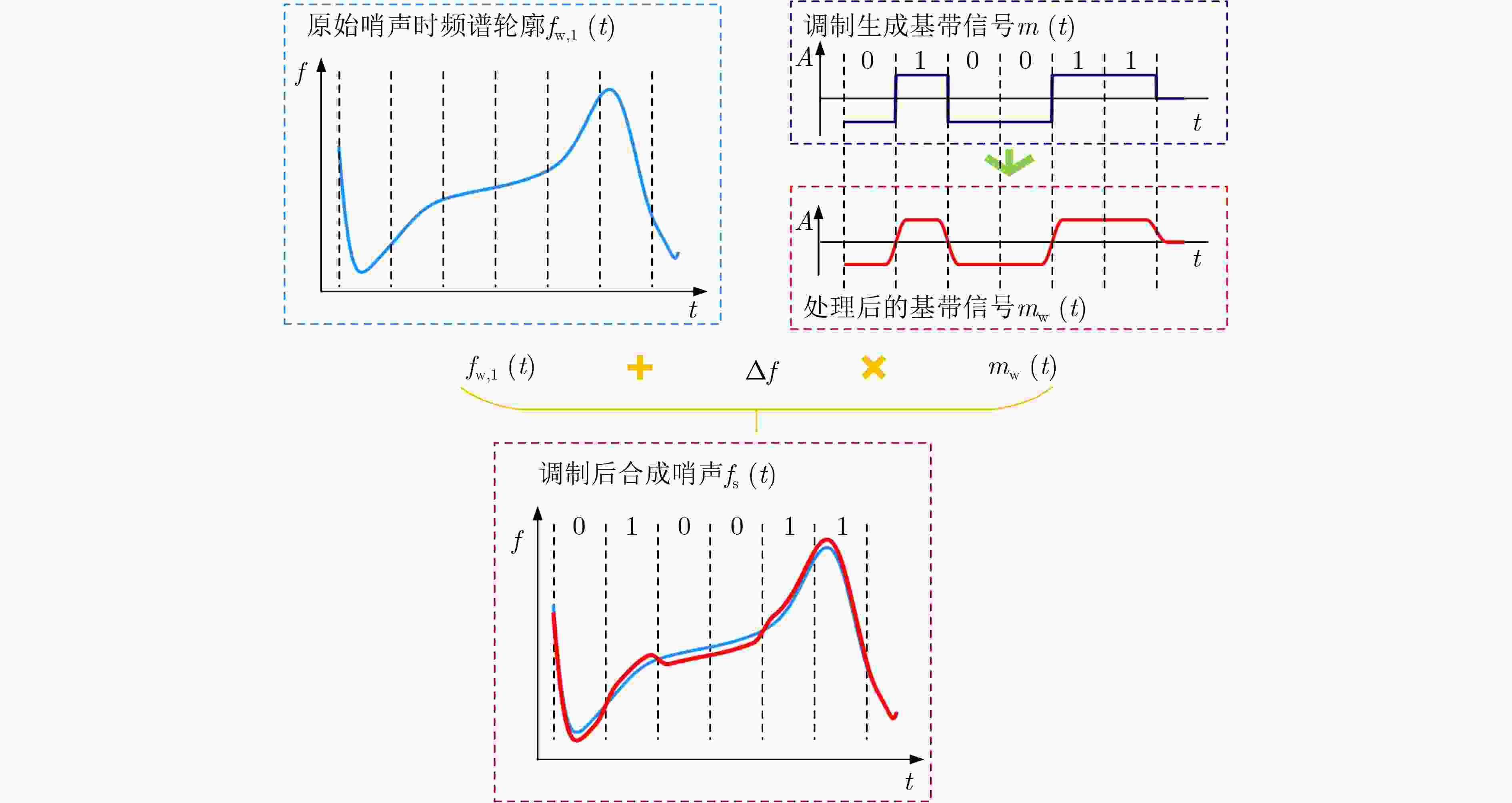
 下载:
下载:

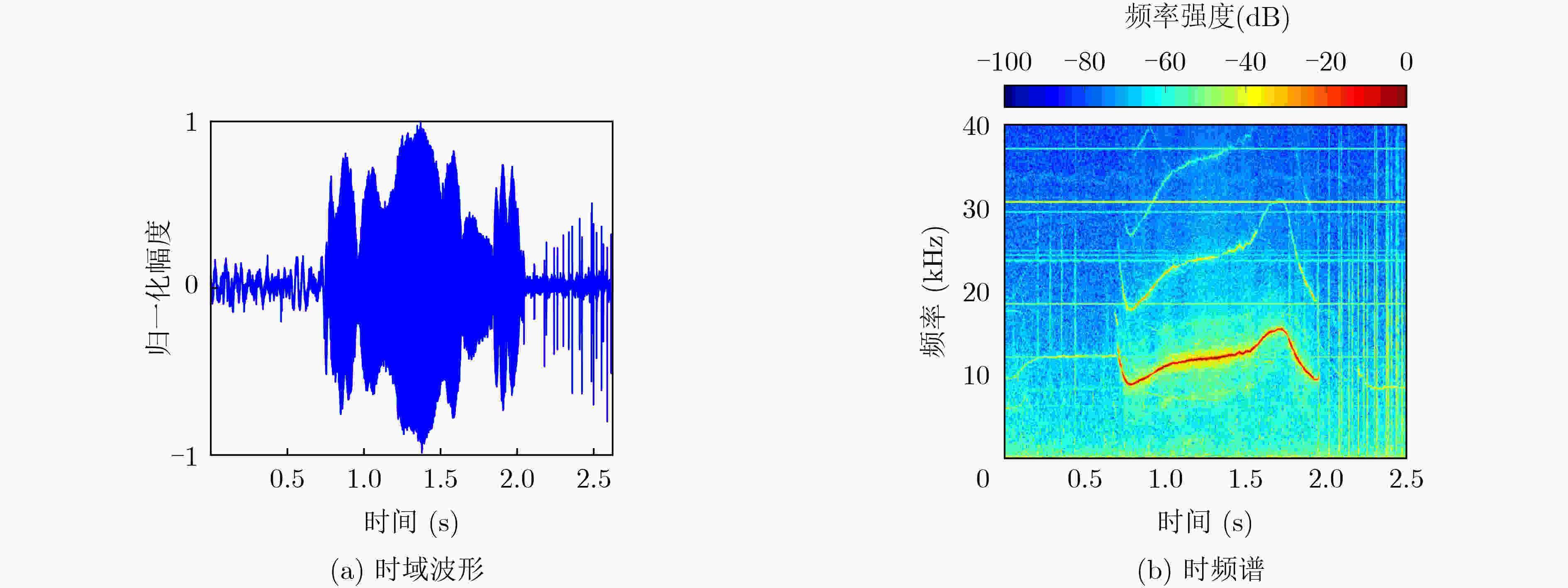
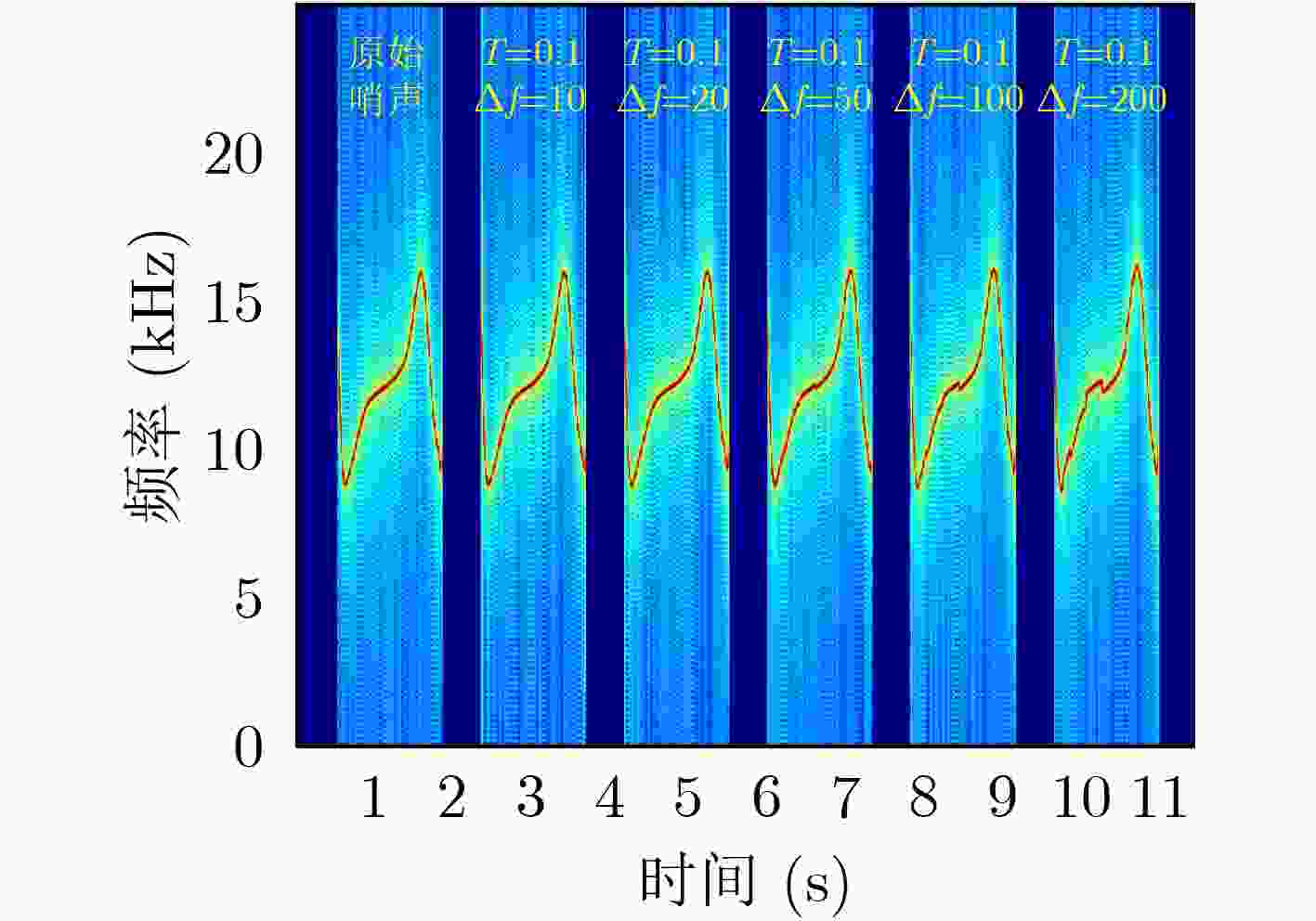
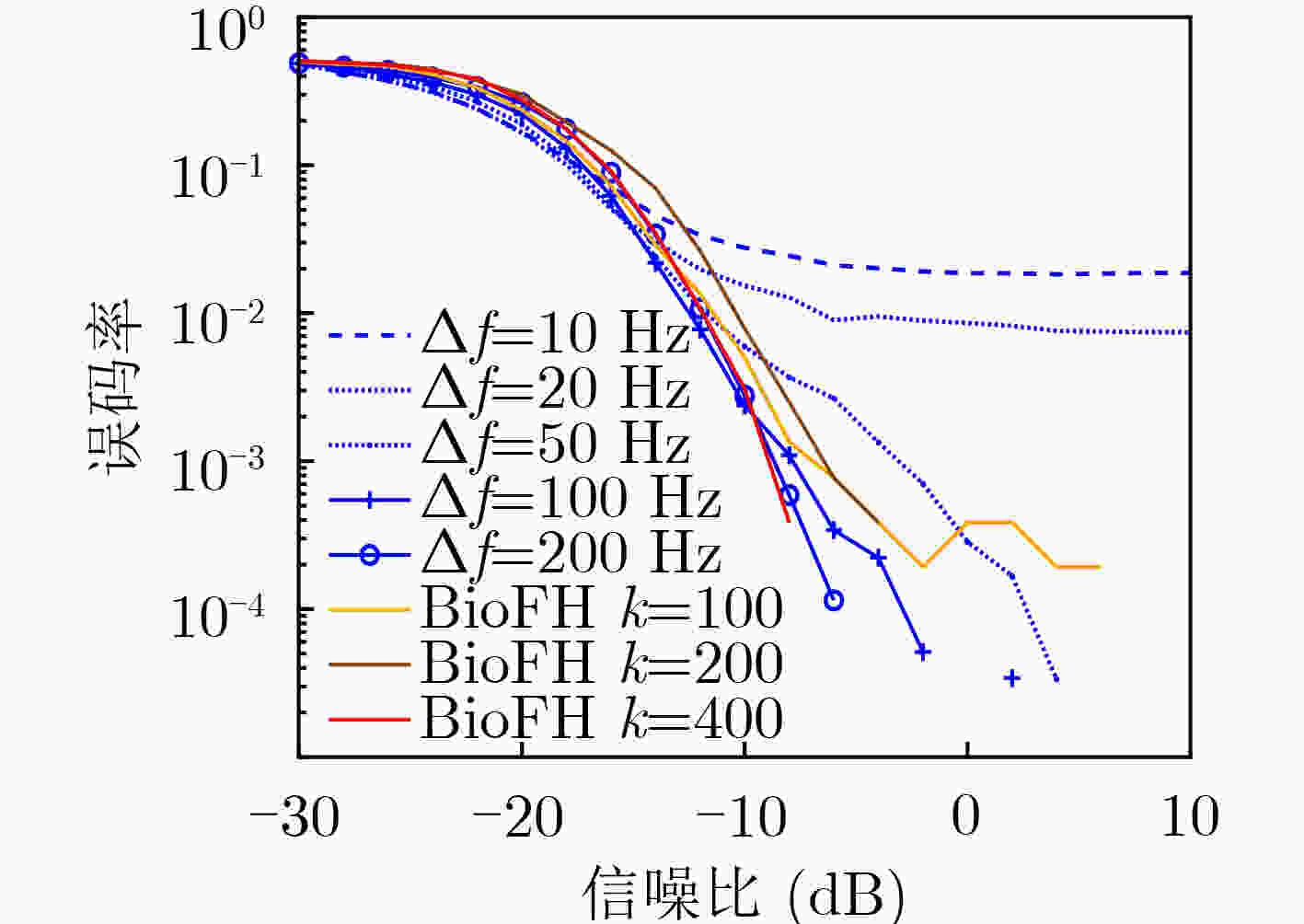
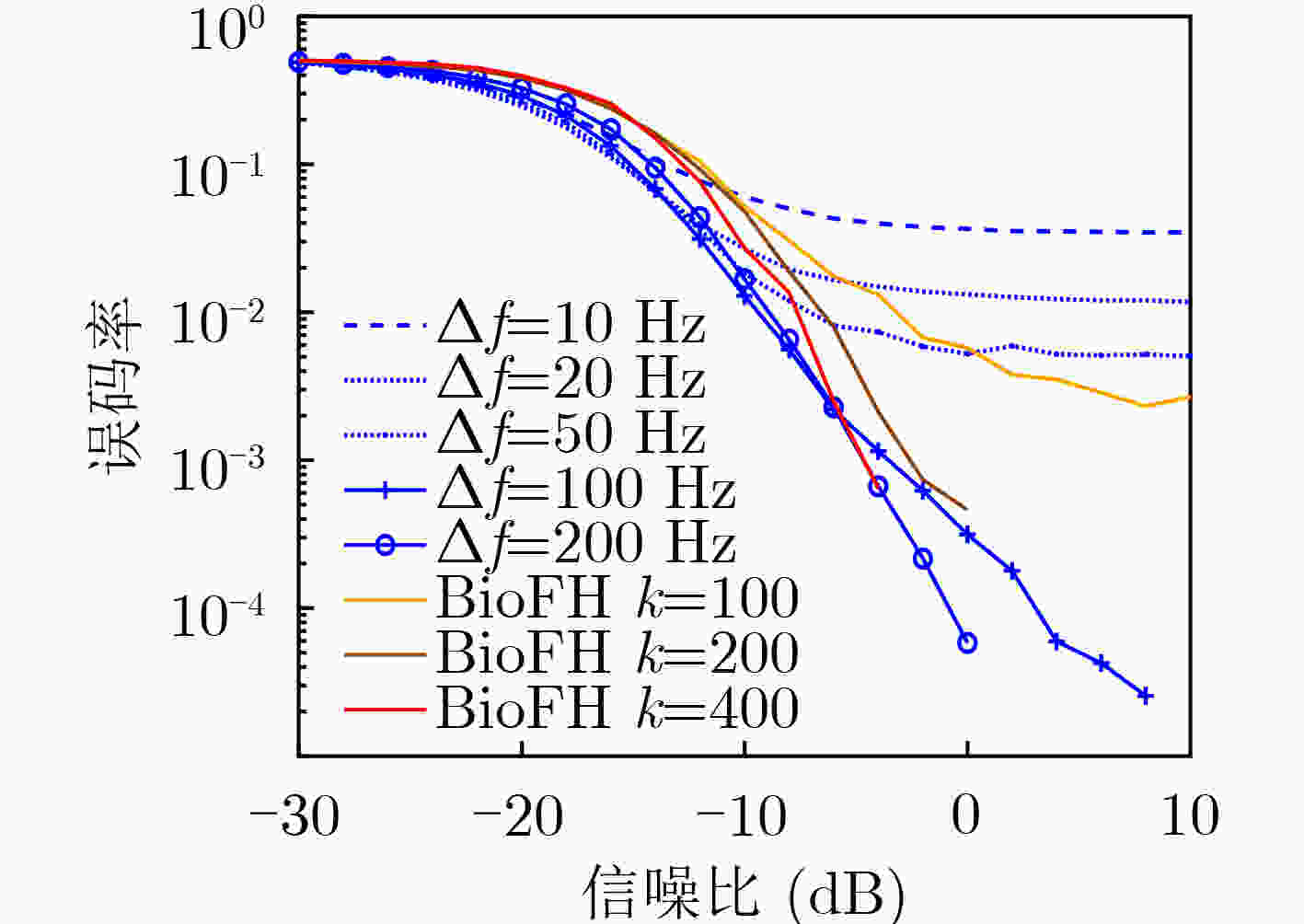
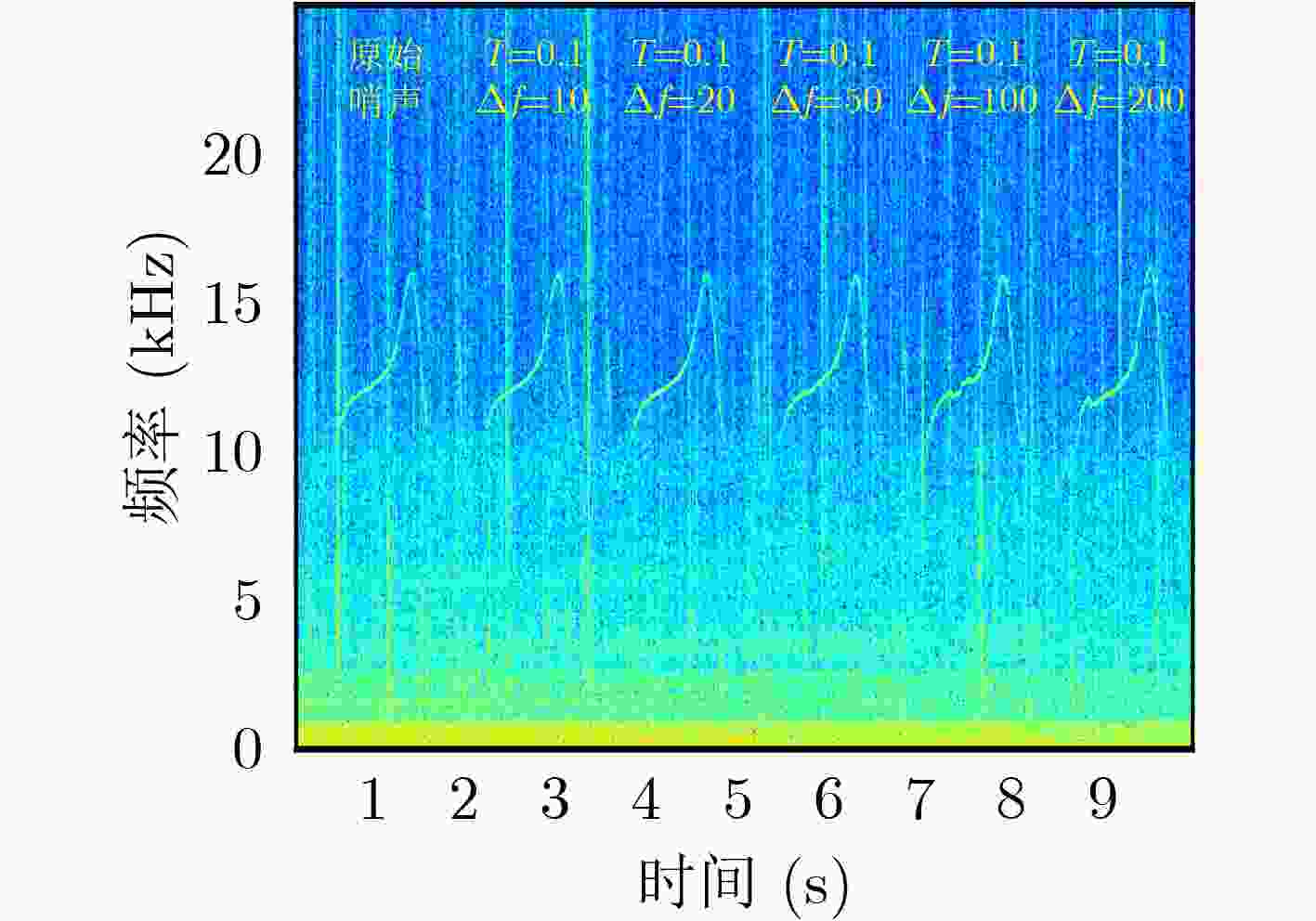


 下载:
下载:
